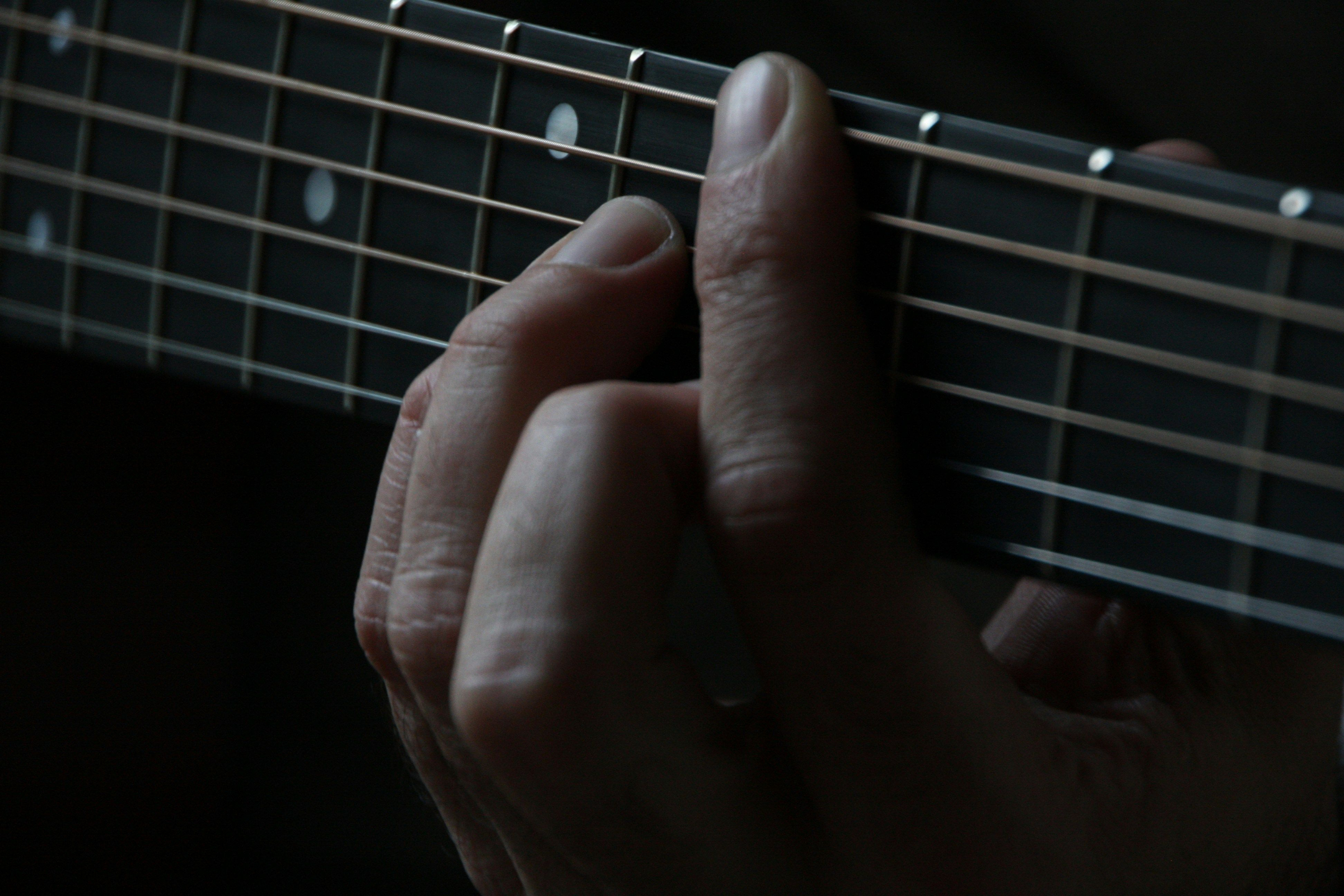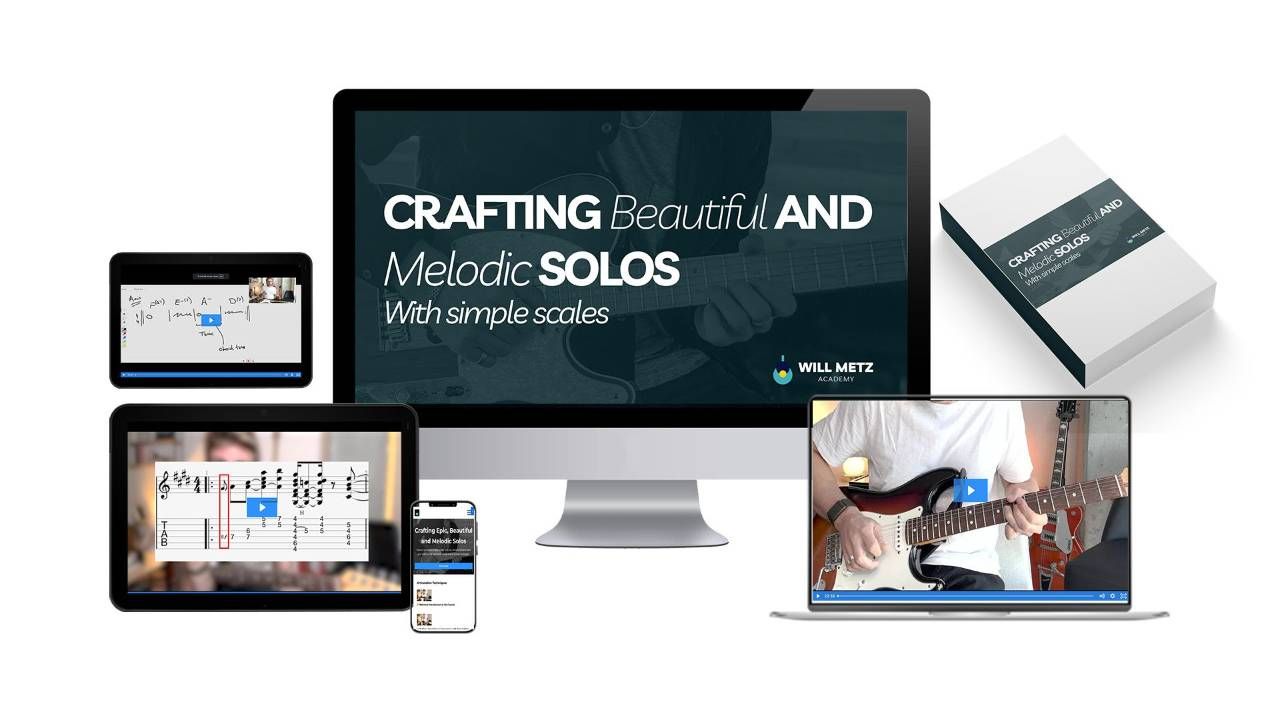HOW TO
Craft Beautiful & Melodic Solos with Simple Scales
Learn the strategies that allow so many legendary players to make impactful solos even with simple pentatonic scales... (Money Back Guarantee)
Let's Go!It's not all about learning more scales or modes...

How do they do it?
If you spend some time dissecting and analyzing the scales used by many iconic guitar players, you will realize that many of them actually leverage very simple tools such as the pentatonic scales... So what's the secret

You're looking in the wrong place...
Don't get me wrong... It's also very important to improve your knowledge of theory and learn to navigate the fretboard with various scales and modes.
But you can already learn how to maximize the scales you already know (like the famous minor pentatonic box) to craft impactful solos!

Does This Sound Like You?
- You know your pentatonic scales (at least a shape or two), but your solos sound repetitive or uninspired.
- Learning more scales or modes does not seem to make your solos more melodic or impactful
- You hear legendary players making simple notes sound incredible, but you don’t know how to do the same.
Learn the secrets to melodic soloing
My students encouraged me to make this course available...
This course is normally a submodule of my bigger program, the Will Metz Academy... But after watching this module, they encouraged me to make this available to more people because of how much value they got from it. This is what they have to say:

Hey Will, I just finished the module on Crafting Epic Melodic Solos. You asked for feedback when we finished...HECK YES! I am definitely going to start working these ideas into my improvisational practice, probably working on one thing per day for a little while and then start combining them. The thing that struck me was how each thing you discussed was something that seemed "obvious" once you pointed it out...I just never thought of them as specific, repeatable tools that anyone can utilize. Just being consciously aware of something like "shorter solos can have flat energy curves, but longer ones need to be more variable" is really powerful. Like "oh...that's why I like this solo, or don't like that one." Just being aware of the tools and able to name them goes a REALLY long way, I think. Thanks a ton.
~ David Martin

For me the value in this module is all the guidelines and examples you give in it. Stuff we can use to craft our solos, tools to use (hammer-ons/pull-offs; slides and vibrato to name a few. Then what I found to be useful was you giving a sort of structure, with the repeating phrases, showing how to use different intensity and dynamic of the solo from start, to middle, and then to the end; your giving of examples with solos we know, so we can see exactly what you mean by your explanations.
~ Sébastien Tremblay

I think what I enjoyed the most in this course is going with the flow of each line, finding my way back home on the first and third bars. A lot was intuitive from my years of hacking away, but as always, your engineering mind makes a lot of great points to think about, that had never specifically crossed my mind regarding not just the notes to play, but the flow and energy level throughout the lead. Another helpful thing is how you built on a simple idea in one small area of the fretboard. Once again, maybe that is intuitive, but having the whole section really makes me think about not just what notes to play, but how to "speak" those notes without wearing out the listener, knowing when to take a "breath".
~ Paul Williamson
Who the heck am I?
Hi, I'm Will Metz
And like many of us am was a lost and confused self-taught guitarist for most of my life trying to figure out... well... everything.
But before I decided to because a guitarist and piss off my parents, I actually got a Master's Degree in Civil Engineering. I know right... What was I thinking.
But it wasn't all for nothing! As an engineer I LOVE breaking things apart to understand how they work. Logically.
So I went on a quest of dissecting and understanding how guitar and music theory work, under the hood.
I went on and published two books on Music Theory for Self-taught musicians and have helped hundreds of guitarists all over the world understand theory, fretboard navigation and the science behind impactful and melodic soloing.
3 Principles we will cover
Crafting a solo is like telling a story. It's not about using fancy words and trying pack in as much as you can. In fact, you can use simple tools to convey emotions and captivate the listener. Here is how we do it:
#1
Articulation, Tone and Dynamics
Vibrato, bends, slides, and more effects that bring notes to life.
Good soloing is a narrative are meant to convey emotions. On the guitar this can only be done by building proper articulation, tone and leveraging dynamics to make your solos fluid and expressive.
#2
Principles of Phrasing
Phrasing is literally the art of making coherent and intelligible musical sentences. You need to learn to leverage space, punctuation, rhythm and other crucial elements if you want your solos to make an impact.
#3
Melodic Storytelling
Structuring solos like a conversation to captivate the listener.
Most guitarists make boring solos because they don't know how to leverage their ideas and string them together to truly engage the listener.
I bet you're wondering...
What's Included


35+ Detailed Videos
You can watch the whole thing in one afternoon, and I guarantee it will change your life!

Cheat Sheets and PDFs
Every concept is accompanied with important documents so that you can quickly reference everything you learn!

Private FB Group
Where you can ask questions, post your videos for feedback, and share your progress!



